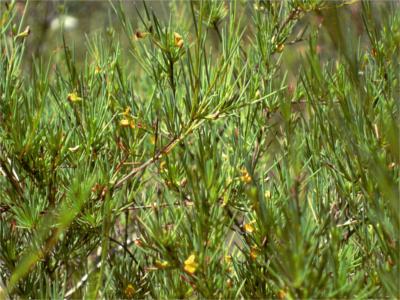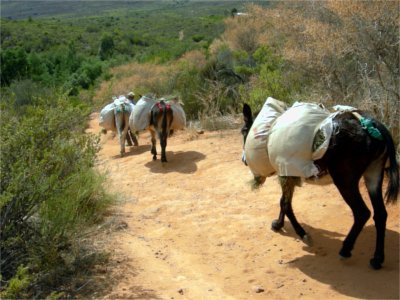
Because of the high vitamin content and a lot of other positive attributes rooibos tea becomes more and more famous worldwide. This bushy plant grows on the slopes of the Cedermountains up to a height of 1.5 m. Only South Africa has the right climate for rooibos to grow. Visitors on the farm find rooibos on the Rooiberg hiking-trail. Harvest starts in January. The farm workers climb the mountains and cut the wild growing bushes. The plants are neither fertilized nor treated with fungicides. This organic tea grows slow and due to that has its strong aromatic taste.
The young tea is still green. After harvesting the tea is cut and wetted. The fermentation takes place overnight and gives the tea its deep red colour and sweet aroma. The next morning already the tea glooms in its characteristic red colour. Now the tea has to dry, which takes about two days. After that it is sieved, sterilized with steam and packed into bags. During storage the tea even enhanced its aroma.

Rooibos tea contains no caffeine and is low in tannin. It is rich in vitamin C and antioxidants. Other contents are: iron, calcium, manganese, fluoride (for healthy teeth), copper (increases the vitamin C reception), phenol acids (antibacterial and help with stomach problems). Altogether rooibos tea has a calming effect, helps against headache and sleeping problems, and relieves stomachaches.
The young tea is still green. After harvesting the tea is cut and wetted. The fermentation takes place overnight and gives the tea its deep red colour and sweet aroma. The next morning already the tea glooms in its characteristic red colour. Now the tea has to dry, which takes about two days. After that it is sieved, sterilized with steam and packed into bags. During storage the tea even enhanced its aroma.

 Rooibos
Rooibos